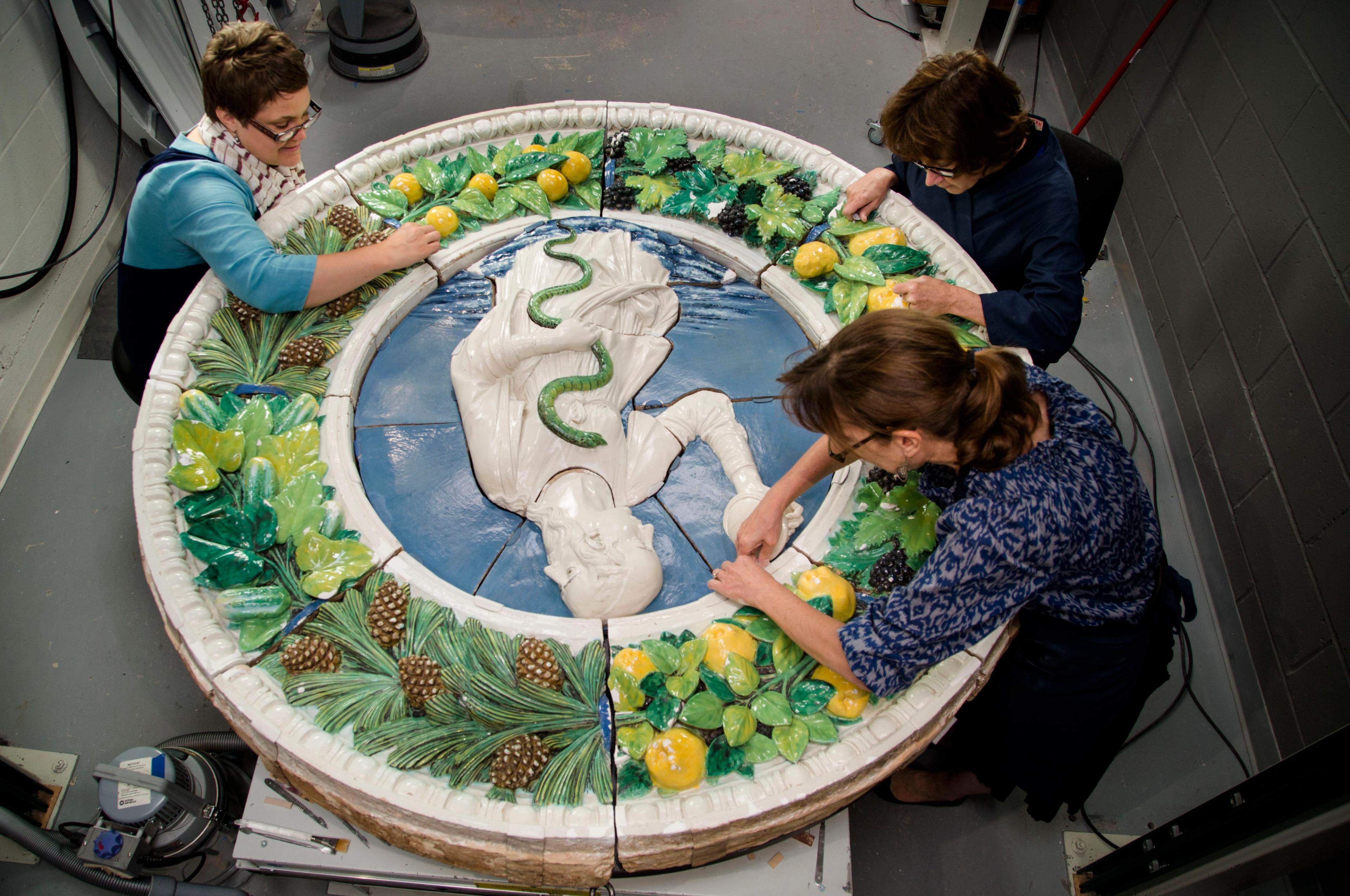Conservators engage with the physical properties of works of art in many ways, including remedial treatment or preventive measures and evaluation for display, publication, outgoing loan, or possible acquisition. With each work they encounter, conservators begin with the investigation and documentation of its materials and manufacture, alterations it has undergone, and its current state of preservation. The most important tool in this initial examination is the conservator’s eyes, often aided by magnification and sometimes supplemented with more specialized techniques such as radiography, multiband imaging, reflectance transformation imaging, polarized and ultraviolet microscopy (especially for the study of painted and other decorative surfaces and identification of pigments, fibers, and wood species), and reflected light microscopy (for examining metalwork).

Small, mobile digital microscopes are increasingly popular for examining works in the collection. In addition to their high-quality optics, using integrated cameras and tethered laptops, they simplify collaboration and training and can produce high-resolution photomacrographs.

Here, a relatively quick examination using ultraviolet radiation reveals what is not readily visible under normal lighting conditions: more than a third of this ceramic dish has been restored. Conservators often employ imaging techniques that use different wavelengths of light that can be used to document condition and material properties.
Among the most important activities of the Department is maintaining the Museum’s collections in stable condition so that works of art can be handled, stored, transported, and exhibited safely, and preserved for future generations. Stability may be attained and maintained through a range of preventive practices and hands-on treatment. Working closely with conservation scientists, conservators make recommendations regarding ambient light levels, temperature, and relative humidity as well as pest mitigation, storage conditions, and exhibition materials in order to minimize deterioration. Remedial treatments may range from stabilizing flaking paint to reversing and replacing failing structural repairs. Conservators may also undertake cosmetic interventions, such as the restoration of a missing element, intended to communicate a closer understanding of an artist’s original intent.

A cosmetic invention—adding small fills painted to match adjacent original surfaces—was the final step in a lengthy conservation treatment of this glazed ceramic tondo, which involved removing it from a deteriorating nineteenth-century support and mounting on a rigid backing panel, with the garland sections placed in their intended positions. This treatment brought together the expertise and skills of four conservators and two conservation preparators.
Based on their knowledge of materials and technology, and using a variety of imaging and analytical tools, conservators carry out research that further addresses questions of attribution, dating, provenance, and the identification of forgeries. They also undertake independent scholarly research on wide-ranging topics including the characterization, and sources of materials, historical methods of manufacture, deterioration of materials, advances in methods of examination, the development of new treatments and conservation materials, and the history of conservation. The results of this research are presented at national and international conferences and disseminated in Museum publications, professional journals, books, conference proceedings, and as web content and on social media.
The design and execution of mounts for the safe display, transport, and storage of works of art combines engineering skill and artistry. This is the forte of the Department’s professional conservation preparators, who fabricate mounts for three-dimensional works of art and install them in permanent galleries and temporary exhibitions. Mounts are also made for works on loan, in storage, and for use during photography.

Conservation preparator mounting a Parthian gilded silver rhyton for display
Small, light-weight works can be mounted directly onto wall panels or secured on decks using small pins, while most heavier works are safely supported by custom-designed, hand-fabricated brass mounts. When required, mounts are further customized to address specific security concerns or to withstand earthquakes. The final step in the fabrication of any brass mount is a painted finish that renders it virtually invisible to the Museum’s visitors. Like the Department’s conservators, conservation preparators travel nationally and internationally when their special skills are needed for complex installations at off-site venues, and they also present their innovative work at professional meetings and in publications.
